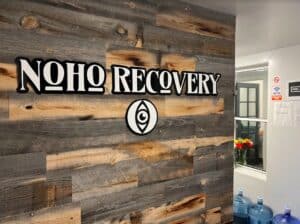Prescription Opioids
What Are Prescription Opioids?
Prescription Opioids, also known as prescription Painkillers, are at the center of America’s Opioid epidemic. As a class of drugs, they are derived from the Opium poppy plant. The plant is typically grown in Asia, Central America, and South America. Semi-Synthetic Opioids are made from Opium as well as man-made compounds with chemical structures similar to Opium. Synthetic Opioids (like Fentanyl), though chemically similar, are fully man-made in pharmaceutical laboratories (though increasing amounts are illicitly manufactured by drug trafficking organizations). The most common prescription Opioids are semi-Synthetic variants Hydrocodone (i.e., Vicodin) and Oxycodone (i.e., Percocet).
Prescription Opioids like Morphine have been used to treat pain for hundreds of years; the Opium plant itself has been cultivated since prehistoric times. Opioids can also be used to treat coughing and diarrhea. The “high” individuals experience during use has led to misuse of and addiction to prescription Opioids. Because of the highly addictive nature of Opioids and the effect they have on the body, the risk of overdose and death is high.
Online Addiction Counseling
Get professional help from an online addiction and mental health counselor from BetterHelp.
- Access to Therapy 24/7
- Easy Online Scheduling
- 20,000+ Licensed Therapists
Paid Advertising. We may receive advertising fees if you follow links to the BetterHelp site.
Common Prescription Opioids
| Type | Brand Names | Description |
| Codeine | A comparatively weak Opioid most often prescribed when Acetaminophen and Ibuprofen don’t work. However, there is still a high addiction potential. | |
| Hydrocodone | Vicodin®, Norco®, Lortab® | A more powerful form of Codeine often mixed with Acetaminophen. It is used to treat moderate to severe acute and chronic pain. |
| Oxycodone | OxyContin®, Percocet® | A long-acting, strong Opioid for moderate to high pain relief that lasts long periods of time. |
| Morphine | Roxanol®, Avinza® | A strong Opioid that typically comes in pill and injectable forms. |
| Meperidine | Demerol® | Similar to Morphine, Demerol is often used prior to surgery as Anesthesia or during childbirth, as well as for moderate to severe acute or chronic pain. |
| Hydromorphone | Dilaudid®, Exalgo® | A powerful semi-Synthetic Painkiller. Hydromorphone is to Morphine as Hydrocodone is to Codeine. |
| Fentanyl | Actiq®, Duragesic® | A surgical, fully Synthetic Anesthetic up to 100 times stronger than Morphine (counterfeit versions are also manufactured illegally). |
| Methadone | Dolophine®, Methadose® | Used to treat withdrawal symptoms of Opioid addiction and to treat severe chronic pain. |
| Buprenorphine | Subutex®, Suboxone® (with Naloxone) | Alternative to Methadone in addiction treatment, produces less euphoria and physical dependence. Buprenorphrine is also used to treat acute and chronic pain. |
Effects Of Use And Overdose Of Prescription Opioids
All Opioids are Central Nervous System (CNS) Depressants, meaning they slow automatic processes like breathing and brain activity and result in a calm and drowsy state. The primary desired effect of prescription Opioid use is pain relief. The “high,” or feeling of euphoria that accompanies certain doses of Opioids, has contributed to the misuse of these drugs and resulted in countless overdoses and deaths.
Opioid overdose occurs when side effects escalate to fatal levels. Specifically, fatal Opioid overdose is usually caused by a person becoming unable to breathe completely as a result of Opioids slowing down the respiratory system. This can lead to a lack of oxygen and death. Death from Opioid overdose can be immediate, but it generally takes longer; it may even take up to several hours. It is possible to overcome an Opioid overdose if someone is available to immediately call 911 or administer Narcan and CPR. Even when overdose is not fatal, it can cause a debilitating organ system injury.
Featured Center Offering Treatment For Prescription Opioids


How To Avoid Prescription Opioid Overdose
- Take medicine only if it has been prescribed to you by your doctor.
- Do not take more medicine than prescribed or take medicine more often than instructed.
- Call a doctor if your pain gets worse.
- Never mix prescription Opioids with alcohol, Sleeping Pills, or any prescribed controlled substance or illicit substance.
- Store your medicine in a safe place where children and pets cannot reach it.
- Learn the signs of an overdose and how to use Naloxone (or Narcan) to keep an overdose from becoming fatal.
- Teach your family and friends how to respond to an overdose.
- Dispose of unused medication properly.
Harmful Side Effects Of Prescription Opioids
Typically, prescription Opioids are administered orally with a pill, sublingually under the tongue, or intravenously with a needle. When Opioids enter the body, they move through the blood stream to the brain and spinal cord where they bind to active Opioid receptors on cells. By attaching to these receptors, Opioids block pain signals and release dopamine. This kind of chemical interaction is highly addictive, and people may become dependent on Opioids to feel good or even normal.
Potential side effects of prescription Opioid abuse or addiction include:
- Drowsiness or reduced consciousness
- Confusion
- Nausea or vomiting
- Dry mouth
- Constipation
- Slowed breathing
- Itching or sweating
- Confusion
- Depression
- Lowered testosterone (resulting in lowered sex drive, energy, and strength)
Looking for a place to start?
Join the thousands of people that have called a treatment provider for rehab information.
Free and confidential
Available 24/7
Access to professional treatment
Who Is At Risk Of Prescription Opioid Addiction?
Anyone taking a prescription for Opioids is at risk of developing a tolerance to their medication. The body becomes used to Opioid medication in a relatively short amount of time. According to the Centers for Disease Control (CDC), the risk of developing an Opioid dependency greatly increases after 5 days of normal use.
Between 1999 and 2016, over 200,000 Americans died of prescription Opioid-related overdose. Fatalities relating to prescription Opioids increased by 500% in that time. Rates of overdose are highest among those 18-25. Comparatively, non-Hispanic whites and Native Americans have the highest rates of abuse and overdose. West Virginia, Ohio, Maryland, Maine, Connecticut, Illinois, Indiana, Massachusetts, New Hampshire, and Utah are some of the states with the highest rates of prescription-Opioid-related overdose. Most people who develop an addiction report obtaining pills from a friend or family member or through a prescription from a healthcare provider.
Prescription Opioid Dependency Vs. Addiction
A physical dependence on Opioids is characterized by the onset of symptoms of withdrawal when use of the substance is stopped. While dependence is one part of addiction, Opioid addiction and abuse also encompass the inability to quit usage despite negative consequences as well as tolerance and withdrawal.
Not everyone who takes prescription Painkillers will develop an addiction. Over one-third of adults in the US took Opioid medication in 2015, and 12 million did so without approval from a doctor. As prescription drug monitoring programs take effect across the country, fewer pills are being abused or sold illegally on the streets. Prescription Opioid addicts are having to turn to more easily obtained and illegal alternatives in order to replace the pills they can no longer acquire. Because of this, Heroin and illicitly manufactured Fentanyl (counterfeited to look like prescription pills) have flooded neighborhoods nationwide, causing increases in overdoses and deaths at a time when prescription Opioid deaths had leveled off.
The CDC’s four biggest risk factors for a dependence developing into an addiction are:
- Obtaining overlapping prescriptions from multiple providers and pharmacies.
- Taking high daily dosages of prescription Painkillers.
- Having mental illness or a history of alcohol or other substance abuse.
- Living in rural areas and having low income.
Source: CDC
Abuse Statistics
46
deaths per day
More than 46 people die every day in the US from an overdose involving a prescription Opioid.
40
percent
40% of all Opioid-related deaths include a prescription Opioid.
17
thousand
In 2016, prescription Opioids contributed to approximately 17,087 overdose deaths.
Check if my insurance covers rehab
Addiction Center is not affiliated with any insurance.
Treatment And Recovery
Since 2016, drug overdose has been the leading cause of death for Americans younger than 50. Overdose rates have climbed faster than HIV cases did during their peak. In 2017, the Opioid Epidemic was declared a national health crisis in the US; over $1 billion was granted to states for addiction treatment and prevention.
Treatment for an Opioid addiction typically starts with medically-assisted detox in order to combat uncomfortable withdrawal symptoms such as body aches, vomiting, and diarrhea; it’s also important to keep the patient safe from potentially fatal complications such as seizures. There are also a variety of evidence-based therapies and addiction treatment medications that can improve the patient’s comfort and increase the chances of a successful recovery. Buprenorphine and Methadone, two types of prescription Opioids, may be prescribed to ease withdrawal symptoms and reduce cravings. This is known as medication-assisted therapy (MAT). Whether individuals attend inpatient drug rehab or outpatient rehab, cognitive behavioral therapy can be beneficial in identifying and working through underlying issues and learning healthy coping skills.
Do You Need Help Quitting Prescription Opioids?
If you’re considering rehab for yourself or a loved one and need more information about treatment centers, contact a treatment provider today. They can discuss your treatment options with you.
Published:
Author
Destiny Bezrutczyk

-
Destiny Bezrutczyk is a Digital Content Writer from west Iowa. She earned a Bachelor’s in English Language and Literature from Texas Tech University. After working as a freelance script and blog writer, she began writing content for tech startups. Maintaining a passion for words, she took on a variety of projects where her writing could help people (especially those battling mental health and substance use disorders).
- More from Destiny Bezrutczyk
Reviewed by Certified Addiction Professional:
Theresa Parisi

Theresa Parisi is a Certified Addiction Professional (CAP), Certified Behavioral Health Case Manager (CBHCM), and International Certified Alcohol and Drug Counselor (ICADC) with over 12 years of experience in the addiction treatment field.
- More from Theresa Parisi
Sources


Recovery Starts Today
Call Now For Addiction Support



Newport Academy – Teen Rehab Center
Port Townsend , WA


Sequoia Detox Centers
Spokane Valley , WA


Moonlight Mountain Recovery – Nampa
Nampa , ID

Bayside Marin Treatment Center
San Rafael , CA

Newport Institute for Young Adults
Sunol , CA

The Camp Recovery Center
Scotts Valley , CA

Moonlight Mountain Recovery
Pocatello , ID


Tarzana Recovery Center – TRC
Tarzana , CA



Hollywood Hills Recovery
Los Angelos , CA